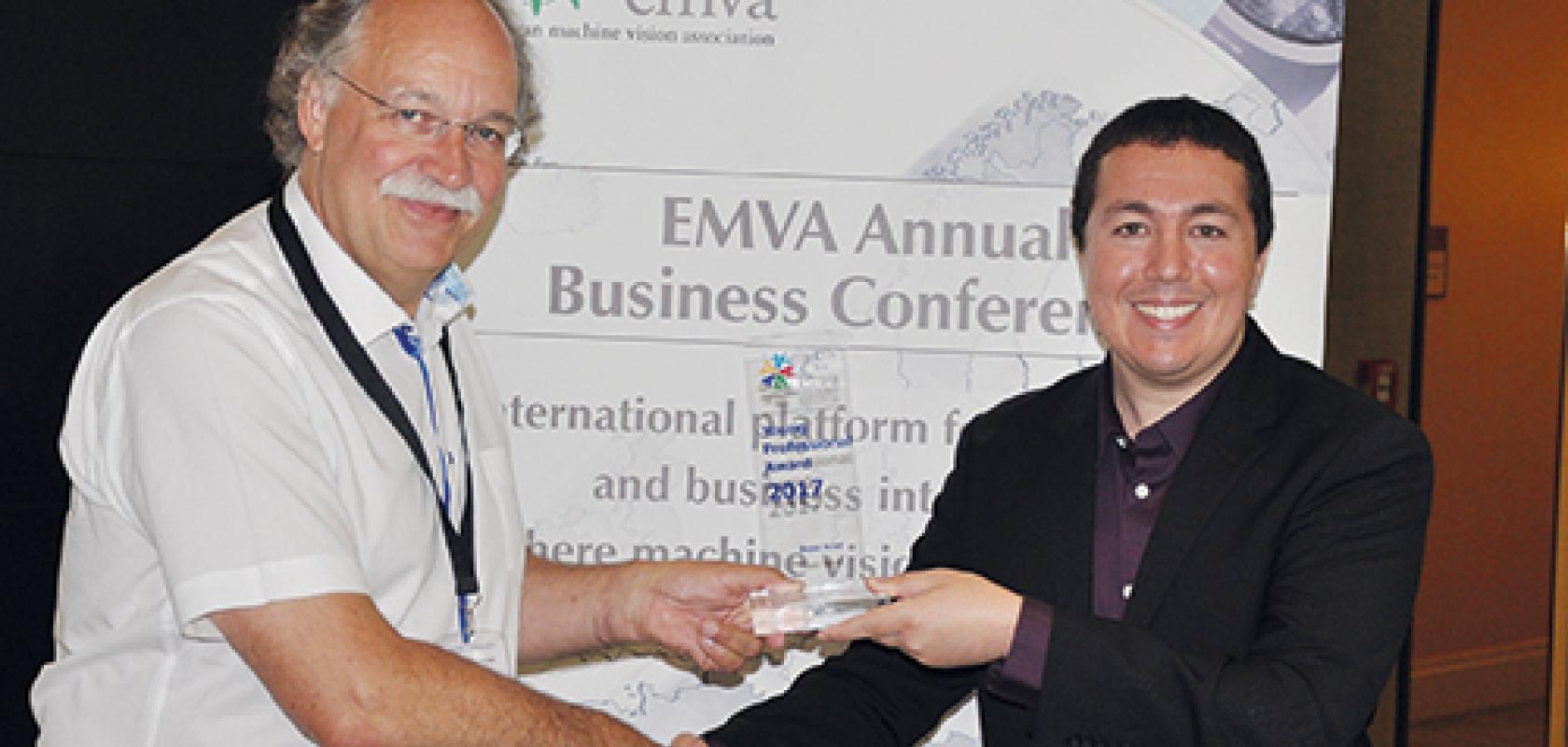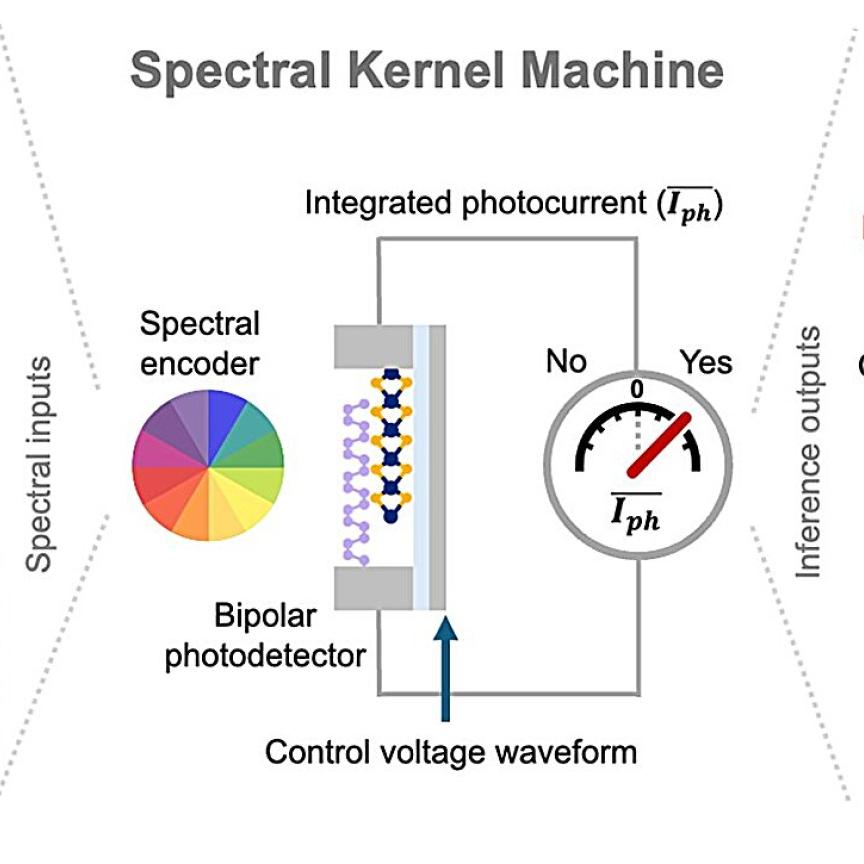Boaz Arad (right) accepting the EMVA award from Jochem Herrmann, EMVA president
Explain the technology that won the EMVA award.
At the BGU Interdisciplinary Computational Vision Lab, headed by Professor Ohad Ben-Shahar, we have been exploring hyperspectral imaging for quite some time. Hyperspectral (HS) imaging systems are capable of collecting the complete spectral signature reflected from each point in a given scene, producing a much more spectrally detailed image than that provided by RGB cameras. This additional information can be quite useful for many machine vision applications, but it comes with a cost.
To date, scientific and industrial applications that require hyperspectral information have relied almost exclusively on traditional scanning HS imaging systems. These systems are expensive, bulky, and often require close to one minute to acquire an entire scene.
The research that won the EMVA award deals primarily with reconstruction of hyperspectral information from low-cost multi-spectral cameras, or even consumer RGB cameras. This effectively allows these fast, low-cost, and compact cameras to replace cumbersome HS systems.
Another important aspect of the work is the collection of a large natural hyperspectral image database. While most published HS image collections were produced by air or space-borne platforms, our database includes a large variety of ground-level horizontally viewed scenes. These scenes could prove instrumental in developing HS imaging applications for everyday use.
How can this be applied to solve real-world vision applications?
First and foremost, this technology can facilitate the use of existing HS imaging applications on very low-cost hardware. There are many applications including: material identification or analysis, and target detection, as well as commercial applications in agriculture, robotics, astronomy, geography, the defence industry, and more.
There are some exciting applications for this technology in conventional imaging. Given the ability to recover HS information from low-cost consumer sensors, it is possible to improve low-light performance, providing gains of over 100 per cent in photon efficiency. Another possible application involves the use of HS information to perform illumination detection and separation for RGB cameras, i.e. white balance. This may improve colour accuracy for existing and future camera systems.
We are currently exploring the above at HC-Vision, a university-backed start-up company.
What are the benefits of winning the award?
It is quite exciting to have our work recognised in this manner, and I’ve been surprised by the amount of interest the award has garnered in both academia and industry. We’ve had many researchers and companies express interest in our work, as well as the HS image database published alongside it. It seems that some interesting collaborations may arise.
Another fascinating aspect of this journey has been the exposure to industry leaders and the forums they frequent. Having spent the past several years in mostly academic circles, I was pleasantly surprised to find an abundance of useful solutions and interesting problems. As most researchers are usually searching for either the former or the latter, I think many of them would benefit from the occasional visit to such gatherings.
How could ties between academia and industry in Europe be improved?
The key to achieving this is creating good forums for collaborations between industry and academia. One example would be the Horizon 2020 initiative, where research groups are encouraged to collaborate with established firms in order to keep the European Union at the cutting edge of both science and technology.
The Interdisciplinary Computation Vision Lab has been involved in a project, dubbed SWEEPER, where we’ve been developing a sweet pepper harvesting robot alongside firms and research labs from across the EU. This project has been quite exciting!
Another good avenue for facilitating collaboration would be conferences and meetings geared specifically towards the intersection of industry and academia. I’m looking forward to participating in the EMVA Forum meeting in Vienna from 6 to 8 September. After seeing how productive the industry-oriented EMVA business meeting was, I’m quite certain the next event will be even more successful.
What are your future plans for this work?
I’d like to see this technology move out of the lab to consumers. Fortunately, Ben-Gurion University’s technology transfer company is allowing us to do just that by founding the HC-Vision start-up company. We are progressing steadily and may even see our first prototypes completed before the year is out.


